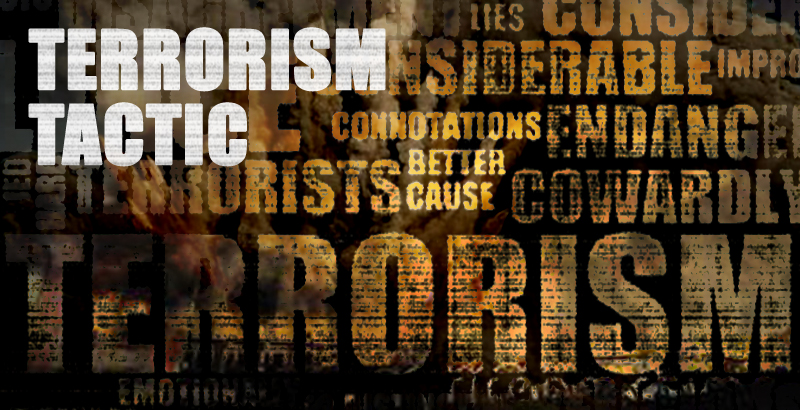Friday night in Paris, November 13. The people watching the Eagles of Death Metal in the Bataclan theatre, the people watching the match between Germany and France at Stade de France and the people in a few restaurants in the French capital probably didn’t expect to become a battle field of terror, fear, and anger.

The light in the tunnel of this horror night were the taxis, which not taking money from the people drove Parisians to their homes, and the people who using the hashtag #PortesOuvertes take people in their homes to get them away from the massacre.
All of this is another act of terrorism added to the history. Terrorism is not an enemy. It cannot be defeated. It’s a tactic… We’re not going to win the war on terrorism.
ISIS Abu Bakr Al-Baghdadi’s self-proclaimed Islamic Caliphate- also called ISIS, ISIL, and Daesh- took responsibility for the terroristic act in Paris in which nearly 150 people died and more that 300 were injured.
Before that, ISIS took responsibility for the Russian airliner Metrojet that took away the lives of another 224 innocent people. Even though, that the authorities didn’t believe that the plane crash was a terroristic attack, this week it was confirmed that they found an explosive substance on the plane.
This only shows the growing power of this organization. It spreads its power even beyond West Asia. The ISIS fighters have also been active in Algeria, Libya, South Sudan and Tunisia. Boko Haram, the militant Islamist group in Nigeria, has pledged allegiance to ISIS. On a single day this organization targeted people in France, Kuwait, and Tunisia, and left many people dead in a week of June 2015, as if to show their power.
ISIS openly proclaimed their intensions to expand eastwards and to establish an Islamic state of Khorasan that will include Afghanistan, the Central Asian Republics, eastern Iran, and Pakistan.
The final target for ISIS will be to extend its caliphate to India. There has already been established an ISIS branch there, though. It is led by Muhsin al Fadhli and is based somewhere in Pakistan. It is unclear where exactly they have presence but their flags are waved in Srinagar, in a few districts in Afghanistan’s Nangarhar province and according to some fractions of the TTP their allegiance is declared at the Al-Baghdadi.
ISIS organization is one of the many participants in the age of ‘’New Terrorism’’. Mainly Sunni fighters are in it and from what we have seen so far we can see that they use mainly brutality in order to accomplish what they are doing. We have seen videos in which innocent hostages have been beheaded. They have proved that they can fight on many fronts, terrorism now has new values. We may infer that in the past terrorism was something that wanted a lot of observers but now terrorism shows desire for using death to do what they want to do.
Not surprisingly ISIS use cyberspace in order to ensure that what they accomplish and is deftly exploiting the Internet as an effective propaganda tool to spread its message. It is using Facebook and bulletin boards to influence the minds of Muslim youth and gain recruits. They are not an organization that only shoots in order to kill. They use the government’s gaps in order to win the society. All the terroristic groups multitask.
They set up complex communication machines — radio stations, TV channels, Internet websites and social media strategies. And up here, you have the ISIS magazine, printed in English and published to recruit. Armed groups also invest in complex fund-raising — not looting, but setting up profitable businesses; for example, construction companies. Now, these activities are keys. They allow these groups to increase their strength, increase their funds, to better recruit and to build their brand. And ISIS are not the only ones who do it this way.
The age of ‘new terrorism’ began well before the ISIS militia began its vicious campaign in Iraq and Syria. Walter Laqueur, the well-known terrorism historian, wrote in 1999 that the character of terrorism was assuming catastrophic proportions and changing in a revolutionary manner. “Rather than the vicious yet calculated application of violence that everyone had become familiar with, the world was now confronted with terrorists whose aim was ‘to liquidate all satanic forces [and destroy] all life on earth’.”
Armed groups also do something else: they build stronger bonds with the population by investing in social services. They build schools, they run hospitals or set up vocational-training programs. Armed groups also seek to win the population over by offering something that the state is not providing: safety and security. The initial rise of the Taliban in war-torn Afghanistan, or even the beginning of the ascent of ISIS, can be understood also by looking at these groups’ efforts to provide security. Now, unfortunately, in these cases, the provision of security came at an unbearably high price for the population. But in general, providing social services fills a gap, a governance gap left by the government, and allows these groups to increase their power.
The important part of the war with terrorism and extremism is actually on the battle field of social problems and ideology. In order to solve the big challenges in Europe, we need to put the social innovations as a priority. We see so many people being attracted by the ideas of radicalism and extremism to join these organizations. We need to set our priorities and think about why this exists because there is no religion that approves brutality as something that can be justified.
In Paris, we fell form a huge height, we need to think how are we going to stand up and fight with minimizing the victims of this fight.
Yoana
SouthFront



